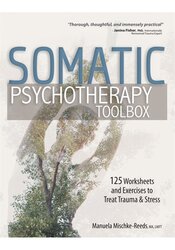How to Integrate Somatic Techniques into Your Existing Practice

Somatic psychotherapy techniques can be seamlessly woven into the therapy you’re already practicing. For clinicians with a mindfulness-based orientation, the transition to incorporating somatic tools is especially smooth, as both approaches emphasize awareness and presence.
The key is to involve clients in the process. Rather than prescribing techniques, frame them as collaborative experiments. Simple invitations such as “Would you like to try an experiment?” or “How about we try this exercise?” not only show respect but also help establish a mindset of curiosity and openness. In this way, somatic interventions become opportunities for clients to discover what resonates, what can be adjusted, and what truly supports their growth.
This experimental frame empowers clients by fostering both self-advocacy and self-awareness. It also ensures they feel safe, informed, and engaged. Always explain what an exercise involves before beginning, and follow up afterward to process the results together. When clients participate actively rather than being directed, they are more likely to integrate the insights and changes into their lives.
Collaboration is central. Encourage clients to adapt practices to fit their needs and preferences. Like a good scientist, track the starting point, suggest the experiment, and then explore what shifted. Most somatic techniques aim to heighten self-awareness and invite the client to recognize what they can do differently. Sustainable, long-term change often arises when clients discover these insights themselves.
A Simple Framework for Introducing Somatic Techniques in Sessions
- Suggest the exercise in clear, simple language.
- Gain the client’s buy-in by asking for permission to try something new.
- Guide them through the practice, offering safety and flexibility.
- Summarize the outcome by reflecting on what they noticed or experienced.
Sample Invitations You Can Use with Clients to Use Somatic Techniques
- “Would you like to try this exercise?”
- “How about we try this practice?”
- “Let’s find out if we can help you do _____ with this next experience.”
- “Are you interested in trying the following exploration?”
By integrating somatic techniques in this collaborative, experimental way, clinicians can support clients in reconnecting with their bodies, cultivating deeper self-awareness, and discovering change that feels both authentic and lasting.
Adapted from Somatic Psychotherapy Toolbox. Copyright © 2018 Manuela Mischke-Reeds, Somatic Psychotherapy Toolbox. All rights reserved.
Want practical tools you can start using right away? Download these free somatic worksheets to support your clients’ healing.

Manuela Mischke-Reeds has created the go-to resource for mental health therapists who want to incorporate somatic techniques into their daily practice.

Designed with both mental health clinicians and clients in mind, Trauma-Informed Yoga offers 47 short, simple practices that regulate the autonomic nervous system, calm the racing mind, and center those of us living chaotic 21st century lives.

In this workbook, renowned trauma therapist Catherine Cook-Cottone provides a step-by-step, sequential process for embodied healing that will teach you to work through your trauma, reconnect to your body, and begin thinking about what is next in your embodied path forward.






